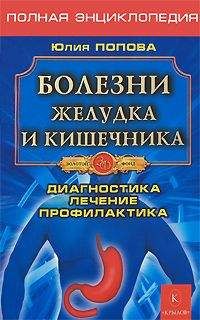Денни Пенман - Осознанная медитация. Практическое пособие по снятию боли и стресса
7
Нейрохирург Уайлдер Пенфилд создал схему первичной соматосенсорной коры, на которой человеческое тело совмещено с корой мозга. Она называется кортикальный гомункул. Прим. ред.
8
Вспомогательное средство в практике йоги. Использование блока для йоги позволяет, не перенапрягаясь, принять нужную асану. Прим. ред.
9
Специальный валик для йоги, который помогает правильно распределить нагрузку на позвоночник и шею, а также расслабить тело. Прим. ред.
10
Метреябандху (род. в 1961 году) – английский поэт, член буддистской общины, автор поэтических сборников, обладатель поэтических наград. Прим. ред.
11
Индустриальный город на севере Англии, входящий в графство Большой Манчестер. В результате упадка промышленности в городе установился высокий уровень бедности, безработицы и преступности. В 2005 году был на девятом месте в списке худших городов Англии. Прим. перев.
12
Распространенный в Великобритании тип магазинов при различных благотворительных организациях, которые принимают пожертвования от населения – одежду, книги, диски, игрушки – и перепродают их, направляя вырученные средства на финансирование деятельности благотворительной организации. Прим. перев.
13
Древний индоарийский язык, на котором написаны многие тексты, вошедшие в канон буддизма тхеравады – Типитаку. Прим. перев.
14
Дерек Уолкотт (р. 1930) – поэт и драматург, уроженец Сент-Люсии. Лауреат Нобелевской премии по литературе 1992 года. Прим. перев.
15
Перевод Т. Андреева.
Комментарии
1
Baer R. A., Smith G. T., Hopkins J., Kreitemeyer J. & Toney L. (2006). ‘Using self-report assessment methods to explore facets of mindfulness’. Assessment, 13, pp. 27–45.
2
Brown. Christopher A., Jones. Anthony K. P. (2013). ‘Psycho bio logical Correlates of Improved Mental Health in Patients With Musculo-skeletal Pain After a Mindfulness-based Pain Management Program’. Clinical Journal of Pain, 29 (3), pp. 233–44.
3
Zeidan. F., Martucci. K. T., Kraft. R. A., Gordon. N. S., McHaffie. J. G. & Coghill. R. C. (2011). ‘Brain Mechanisms Supporting the Modulation of Pain by Mindfulness Meditation’. Journal of Neuroscience, 31 (14), p. 5540; See also the accompanying comments regarding morphine effectiveness by Fadel Zeidan of the Wake Forest University School of Medicine at http://ow.ly/i8rZs.
4
Kabat-Zinn J., Lipworth L., Burncy R. & Sellers W. (1986). ‘Fouryear follow-up of a meditation-based program for the self-regulation of chronic pain: Treatment outcomes and compliance’. Clinical Journal of Pain, 2, p. 159; Morone N. E., Greco C. M. & Weiner D. K. (2008). ‘Mindfulness meditation for the treatment of chronic low back pain in older adults: A randomized controlled pilot study’. Pain, 134 (3), pp. 310–19; Grant J. A. & Rainville P. (2009). ‘Pain sensitivity and analgesic effects of mindful states in zen meditators: A cross-sectional study’. Psychosomatic Medicine, 71 (1), pp. 106–14.
5
Brown Christopher A., Jones Anthony K. P. 2013. MD, ‘Psycho-biological Correlates of Improved Mental Health in Patients With Musculoskeletal Pain After a Mindfulness-based Pain Management Program’. Clinical Journal of Pain, 29 (3), pp. 233–44.
6
Zeidan F., Martucci K. T., Kraft R. A., Gordon N. S., McHaffie J. G. & Coghill R. C. 2011. ‘Brain Mechanisms Supporting the Modulation of Pain by Mindfulness Meditation’. Journal of Neuro-science, 31 (14), p. 5540. See also the accompanying comments regarding morphine effectiveness by Fadel Zeidan of the Wake Forest University School of Medicine at http://ow.ly/i8rZs.
7
Morone N. E., Lynch C. S., Greco C. M., Tindle H. A. & Weiner D. K. (2008b),‘“I felt like a new person” – the effects of mindfulness meditation on older adults with chronic pain: qualitative narrative analysis of diary entries’. Journal of Pain, 9, pp. 841–848.
8
Grossman P., Tiefenthaler-Gilmer, U., Raysz A. & Kesper U. (2007). ‘Mindfulness training as an intervention for fibromyalgia: evidence of postintervention and 3-year follow-up benefits in well-being’. Psychotherapy and Psychosomatics, 76, pp. 226–233; Sephton S. E., Salmon P., Weissbecker I., Ulmer C., Floyd A., Hoover K., et al. (2007). ‘Mindfulness meditation alleviates depressive symptoms in women with fibromyalgia: results of a randomized clinical trial’. Arthritis & Rheumatism, 57, pp. 77–85; Schmidt S., Grossman P., Schwarzer B., Jena S., Naumann J., and Walach H. (2011). ‘Treating fibromyalgia with mindfulness-based stress reduction: results from a 3-armed randomized controlled trial’. Pain 152, pp. 361–369.
9
Gaylord S. A., Palsson, O. S., Garland E. L., Faurot K. R., Coble R. S., Mann J. D., et al. (2011). ‘Mindfulness training reduces the severity of irritable bowel syndrome in women: results of a randomized controlled trial’. American Journal of Gastroenterology, 106, pp. 1678–1688.
10
Grossman P., Kappos L., Gensicke H., D’souza M., Mohr D. C., Penner I. K., et al. (2010). ‘MS quality of life, depression, and fatigue improve after mindfulness training: a randomized trial’. Neurology, 75, pp. 1141–1149.
11
Speca M., Carlson L., Goodey E. & Angen M. (2000). ‘A randomized, wait-list controlled clinical trial: the effect of a mindfulness meditation-based stress reduction program on mood and symptoms of stress in cancer outpatients’. Psychosomatic Medicine, 62, pp. 613–622.
12
Jha A., et al. (2007). ‘Mindfulness training modifies subsystems of attention’. Cognitive Affective and Behavioral Neuroscience, 7, pp. 109–119; Tang Y. Y., Ma Y., Wang J., Fan Y., Feng S., Lu Q., et al. (2007). ‘Short-term meditation training improves attention and selfregulation’. Proceedings of the National Academy of Sciences (US), 104 (43), pp. 17152–6; McCracken L. M. & Yang S. – Y. (2008). ‘A contextual cognitive-behavioral analysis of rehabilitation workers’ health and well-being: Influences of acceptance, mindfulness and values-based action’. Rehabilitation Psychology, 53, pp. 479–85; Ortner C. N. M., Kilner S. J. & Zelazo P. D. (2007). ‘Mindfulness meditation and reduced emotional interference on a cognitive task’. Motivation and Emotion, 31, pp. 271–283; Brefczynski-Lewis J. A., Lutz A., Schaefer H. S., Levinson D. B. & Davidson R. J. (2007). ‘Neural correlates of attentional expertise in long-term meditation practitioners’. Proceedings of the National Academy of Sciences (US), 104 (27), pp. 11 483–11 488.
13
Brown Kirk Warren, Ryan Richard M. (2003). ‘The benefits of being present: Mindfulness and its role in psychological well-being’. Journal of Personality and Social Psychology, 84 (4), pp. 822–48; Lykins Emily L. B. & Baer Ruth A. (2009). ‘Psychological Functioning in a Sample of Long-Term Practitioners of Mindfulness Meditation’. Journal of Cognitive Psychotherapy, 23 (3), pp. 226–241.
14
Ivanowski B. & Malhi G. S. (2007). ‘The psychological and neurophysiological concomitants of mindfulness forms of meditation’. Acta Neuropsychiatrica, 19, pp. 76–91; Shapiro S. L., Oman D., Thoresen C. E., Plante T. G. & Flinders T. (2008). ‘Cultivating mindfulness: effects on well-being’. Journal of Clinical Psychology, 64 (7), pp. 840–62; Shapiro S. L., Schwartz G. E. & Bonner G. (1998). ‘Effects of mindfulness-based stress reduction on medical and premedical students’. Journal of Behavioral Medicine, 21, pp. 581–599.
15
См. NICE Guidelines for Management of Depression (2004, 2009). Ma J. & Teasdale J. D. (2004). ‘Mindfulness-based cognitive therapy for depression: Replication and exploration of differential relapse prevention effects’. Journal of Consulting and Clinical Psychology, 72, pp. 31–40; Segal Z. V., Williams J. M. G. & Teasdale J. D. Mindfulness-based Cognitive Therapy for Depression: a new approach to preventing relapse (Guilford Press, 2002); Kenny M. A. & Williams J. M. G. (2007). ‘Treatment-resistant depressed patients show a good response to Mindfulness-Based Cognitive Therapy’. Behaviour Research & Therapy, 45, pp. 617–25; Eisendraeth S. J., Delucchi K., Bitner R., Fenimore P., Smit M. & McLane M. (2008). ‘Mindfulness-Based Cognitive Therapy for Treatment-Resistant Depression: A Pilot Study’. Psychotherapy and Psychosomatics, 77, pp. 319–20; Kingston T., et al. (2007). ‘Mindfulness-based cognitive therapy for residual depressive symptoms’. Psychology and Psychotherapy, 80, pp. 193–203.
16
Bowen S., et al. (2006). ‘Mindfulness Meditation and Substance Use in an Incarcerated Population’. Psychology of Addictive Behaviors, 20, pp. 343–347.
17
Hölzel B. K., Ott U., Gard T., Hempel H., Weygandt M., Morgen K. & Vaitl D. (2008). ‘Investigation of mindfulness meditation practitioners with voxel-based morphometry’. Social Cognitive and Affective Neuroscience, 3, pp. 55–61; Lazar S., Kerr C., Wasserman R., Gray J., Greve D., Treadway M., McGarvey M., Quinn B., Dusek J., Benson H., Rauch S., Moore C. & Fischl B. (2005). ‘Meditation experience is associated with increased cortical thickness’. NeuroReport, 16, pp. 1893–1897; Luders Eileen, Toga Arthur W., Lepore Natasha & Gaser Christian (2009). ‘The underlying anatomical correlates of long-term meditation: Larger hippocampal and frontal volumes of gray matter’. Neuroimage, 45, pp. 672–678.
18
Tang Y., Ma Y., Wang J., Fan Y., Feg S., Lu Q., Yu Q., Sui D., Rothbart M., Fan M. & Posner M. (2007). ‘Short-term meditation training improves attention and self-regulation’. Proceedings of the National Academy of Sciences, 104, pp. 17 152–17 156.
19
Davidson R. J. (2004). ‘Well-being and affective style: Neural substrates and biobehavioural correlates’. Philosophical Transactions of the Royal Society, 359, pp. 1395–1411.
20
Lazar S., Kerr C., Wasserman R., Gray J., Greve D., Treadway M., McGarvey M., Quinn B., Dusek J., Benson J., Rauch S., Moore C. & Fischl B. (2005). ‘Meditation experience is associated with increased cortical thickness’. Neuro Report, 16, pp. 1893–1897.
21
Davidson R. J., Kabat-Zinn J. Schumacher J., Rosenkranz M., Muller D., Santorelli S. F., Urbanowski F., Harrington A., Bonus K. & Sheridan J. F. (2003). ‘Alterations in brain and immune function produced by mindfulness meditation’. Psychosomatic Medicine, 65, pp. 564–70; Tang Y., Ma Y., Wang J., Fan Y., Feg S., Lu Q., Yu Q., Sui D., Rothbart M., Fan M. & Posner M. (2007). ‘Short-term meditation training improves attention and self-regulation’. Proceedings of the National Academy of Sciences, 104, pp. 17 152–17 156.
22
Epel Elissa, Daubenmier Jennifer, Tedlie Moskowitz Judith, Folkman Susan & Blackburn Elizabeth (2009). ‘Can Meditation Slow Rate of Cellular Aging? Cognitive Stress, Mindfulness, and Telomeres’. Annals of the New York Academy of Sciences, 1172; Longevity, Regeneration, and Optimal Health Integrating Eastern and Western Perspectives, pp. 34–53.
23
Walsh R. & Shapiro S. L. (2006). ‘The meeting of meditative disciplines and Western psychology: A mutually enriching dialogue’. American Psychologist, 61, pp. 227–239.
24
Walsh R. & Shapiro S. L. (2006). ‘The meeting of meditative disciplines and Western psychology: A mutually enriching dialogue’. American Psychologist, 61, pp. 227–239.
25
Kabat-Zinn J., Lipworth L., Burncy R. & Sellers W. (1986). ‘Fouryear follow-up of a meditation-based program for the self-regulation of chronic pain: Treatment outcomes and compliance’. Clinical Journal of Pain, 2, p. 159; Brown Christopher A., Jones Anthony K. P. (2013). ‘Psycho biological Correlates of Improved Mental Health in Patients With Musculoskeletal Pain After a Mindfulness-based Pain Management Program’. Clinical Journal of Pain, 29 (3), pp. 233–44; Lutz Antoine, McFarlin Daniel R., Perlman David M., Salomons Tim V. & Davidson Richard J. (2013). ‘Altered anterior insula activation during anticipation and experience of painful stimuli in expert meditators’. Journal Neuro Image, 64, pp. 538–546.
26
Baliki Marwan N., Bogdan Petre, Torbey Souraya, Herrmann Kristina M., Huang Leijan, Schnitzer Thomas J., Fields, Howard L. &, Vania Apkarian A. (2012). ‘Corticostriatal functional connectivity predicts transition to chronic back pain’. Nature Neuroscience, 15, pp. 1117–1119.
27
См. Уильямс М., Пенман Д. Осознанность: как обрести гармонию в нашем безумном мире. М.: Манн, Иванов и Фербер, 2014.
28
Wall Patrick D. & Ronald Melzack. The Challenge of Pain (Penguin Books, 1982), p. 98; Melzack R. Wall, p. D. (1965). ‘Pain Mechanisms: a new theory, Science, 150 (3699), pp. 371–379.




